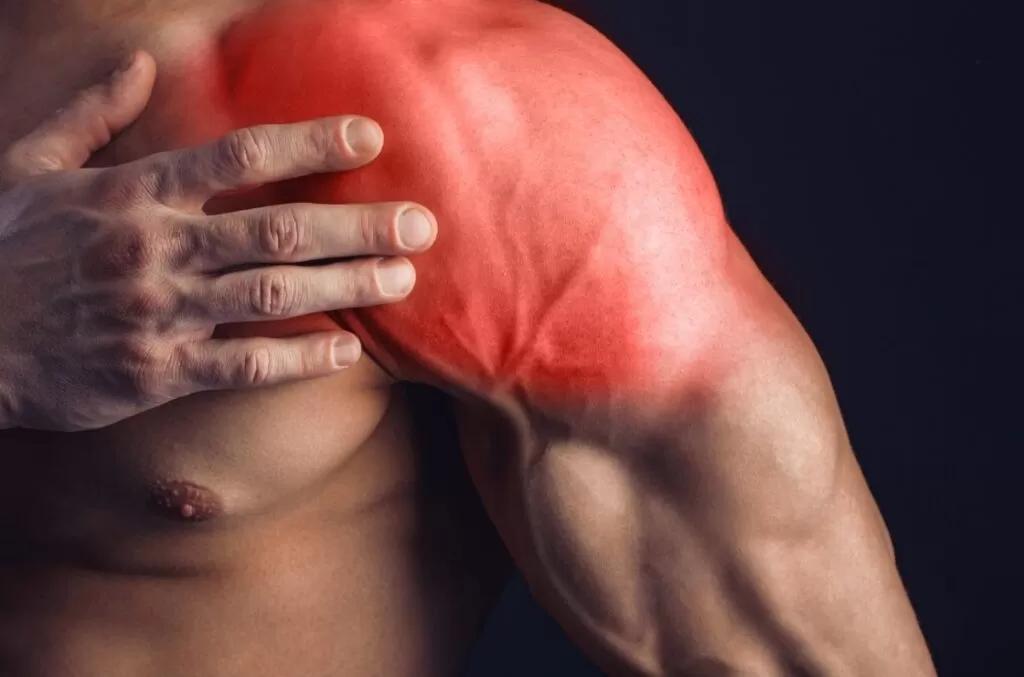When we talk about a muscle tear we are faced with the rupture, either partially or totally. But when this happens, how should we act? Let’s see how to treat a muscle tear.
People who have suffered a muscle tear say it feels as if they are nailed by more than one needle and, in many cases, occurs with some degree of bleeding, as the blood vessels that run through the part that has suffered the rupture break.
The vast majority of this damage occurs when people decide to play a sport for the first time or those who only do so occasionally due to lack of regular time.
The worst thing is that they don’t usually take into account that before starting any physical practice they must perform a proper pre-warming.
Muscles that have the most injuries
Muscle tears can occur much more frequently in the legs and back. For this reason, let’s see what muscles it usually affects so you can treat a muscle tear in the best way:
- calf muscle: the muscles that are injured are those of the lower leg, these muscles have the function of helping to move and lift the heel.
- Quadriceps: the muscles that have been affected are those of the front of the thigh. The main function of these muscles is to help straighten the knee.
- Paravertebral muscles: These are the muscles of the lower back. The main function of these muscles is to hold the spine instead and to be able to withstand the full weight of the upper body.
Degree of tearing
First-degree muscle tear
It’s called muscle distension. The injury occurs when the muscle length to the limit of its elasticity. Patients report severe muscle pain without localized pain. These are mainly microscopic lesions, which affect less than 5% of the muscle substance.
Treatment of these lesions consists of rest of the affected muscle and analgesia.
Second-degree muscle tear
It’s called a partial tear. This is a longer injury that occurs when the muscle strives beyond the limit of its elasticity. It affects more than 5% of the muscle substance but does not affect its entire cross-sectional extension. At the time of the injury, the patient experiences a throat, accompanied by intense local pain of sudden appearance.
There is total muscle impotence and muscle function is slowly recovering in the following days.
Third-degree muscle tear
This is a total tear. It is less common than previous grades, and its initial clinical presentation is very similar to partial breakage. If a bruise forms, it can be a key indicator of muscle breakage.
How to treat muscle tears?
The MSD Manual indicates that bruises, muscle tears (throws) and mild sprains cause mild to moderate pain, in addition to swelling.
While the doctor is being used, to treat a muscle tear properly, we must continue to take care of the following measures.
- As soon as pain feels, the activity that is being carried out must be stopped, in this way, the problem can be prevented from being greater.
- A good time must be spent so that the problem is not more serious.
- As soon as the trouble feels you have to try to apply ice or a cold compress.
- It is very important to maintain the muscle affected with a bandage.
- Try to raise the upper leg or affected part with the help of a cushion.
- When the pain is much less it is advisable to start a rehabilitation program, this should be done with a professional, since the injury can be repeated very easily.
How can muscle tears be avoided?
- As we have already said, it is very important to do a good warm-up before starting any physical activity, especially if this activity is not done very often.
- When the exercise that is being done is about to be completed, it is important to lower the speed or intensity of the exercise, since there can be a tear from tiredness or muscle exhaustion.
- It is important to be attentive to any pain or pull that can be felt anywhere in the body and suspend the activity.
- During exercise, it is very important to consume sufficient amounts of moisturizing drinks.
- When starting any exercise routine it is very important to be patient and to move forward gradually.
- Healthy eating plays a very important role in this case as in any other, it is a good idea to include enough products that contribute fiber to the body, which helps to keep muscle fibers healthy and strong.
- It should be borne in mind that these injuries must be treated as soon as possible, i.e. the latest medical assistance should be sought before forty-eight hours.
It is important to remember that it is necessary to avoid self-medication and natural remedies, as they can be counterproductive. Last but not least: in case of doubt it will always be to consult the doctor.

